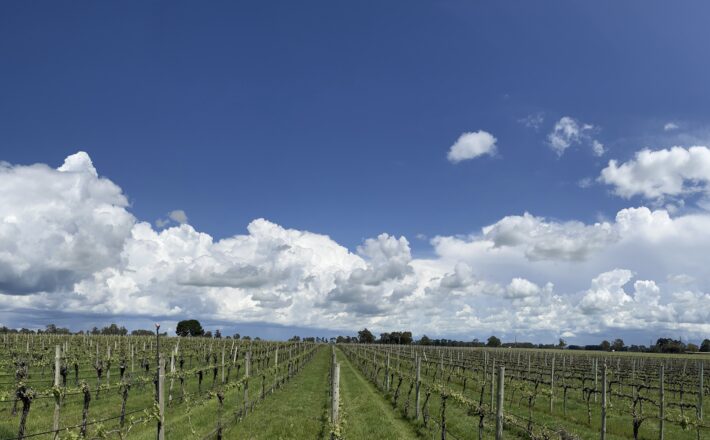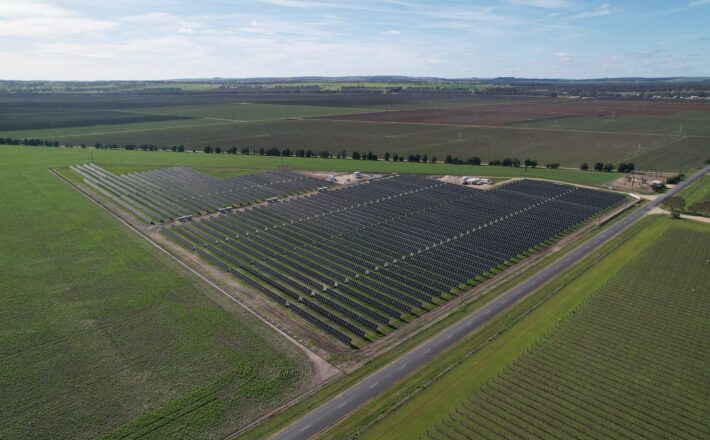The Madgetts Block in McLaren Vale, South Australia has been a certified vineyard member of Sustainable Winegrowing Australia since 2015.
Oli Madgett, the vineyard owner, is focused on the long-term sustainability of the business and considers the environmental, social and commercial impact of all vineyard activities. This case study outlines some of the strategies used to improve soil uniformity and reduce water use across the vineyard. These actions led to improved economic sustainability through more consistent yields and higher grape quality.
Using digital tools to visualise and quantify vineyard variability
When Oli Madgett bought the 6.5-hectare vineyard in 2015, it was immediately identified that the variability in grapevine vigour across the vineyard was affecting both yield and fruit quality. Some vines were receiving too much irrigation and others were not receiving enough.
This was especially evident in hot, dry conditions when the vines growing on sandier soils had insufficient canopy and the bunches shrivelled. Because the blocks were contracted to grow A and B grade fruit, it was important to remediate areas of the vineyard with underperforming vines to maximise revenue through increased yield and improved quality. Being new to grapegrowing, Madgett sought advice from the previous owners, local contractors and consultants and attended several workshops in the region to identify appropriate tools to assist him to identify problem areas in the vineyard and to gain further insight into the causes of the variability.
To visualise the vine variability across the vineyard, Madgett purchased a Normalised Difference Vegetation Index (NDVI) image of the vineyard (Figure 1). NDVI quantifies vegetation by measuring the difference between near-infrared (which vegetation strongly reflects) and red light (which vegetation absorbs). The image that was produced confirmed on-ground visual observations of variability within and across the blocks.
To better understand the underlying cause of the vine variability, Madgett engaged a contractor to develop a map of the vineyard soils using an EM38. The EM38 is a geophysical surveying instrument which, when trailed horizontally through the vineyard, can measure and map electrical conductivity in the top 30 cm of the soil. These measurements can then be used to estimate soil moisture, salinity, clay content and water-holding capacity of the soil.
Areas of the vineyard with similar soil properties can then be divided into smaller management units. Together the NDVI and EM38 soil maps have enabled the identification of low vigour areas of the vineyard, which have been targeted for remediation.

Soil remediation at The Madgetts Block
Madgett developed a soil management plan for the property that targeted underperforming areas identified using the NDVI and EM38 maps. Recognising that these areas could benefit from additional inputs, Madgett implemented a range of activities to remediate them including variable rate application of compost, gypsum and mulch. A cover crop was also grown over winter and spring and rolled later in the season to provide a layer of mulch over the mid-row (Figure 2).
Monitoring soil moisture
Soil moisture probes have been installed to provide information about plant available water and enable more targeted irrigation practices. The soil moisture data shows that the soil amendments have resulted in higher levels of water retention. The Sustainable Winegrowing Australia benchmarking reports show that water use at The Madgetts Block was amongst the lowest 19% of members nationally and the lowest 10% of members in McLaren Vale in 2018/19 (Figure 3).


The vines in the weaker areas of the vineyard have become more resilient to extreme heat due to the increased buffering capacity of the soil and, on average, block yields have increased. Since focusing on improving the uniformity of the vineyard, an increase in yield and fruit quality has been observed and, in 2019, all blocks achieved A grade. The improvements in yield and fruit grading translated to an approximately 20% increase in revenue for the business, which has resulted in an overall economic benefit from the investment in soil remediation. The aim for the future is to continue soil remediation activities and to deliver improved yield and quality each year.
Future monitoring of soil carbon
In 2020 Madgett commenced a comprehensive regime to measure baseline soil carbon across the vineyard, with the assistance of Natural Resources Adelaide and Mt Lofty Ranges and soil and precision viticulture consultants. Soil cores were collected down to 30 cm from the mid-row and undervine areas. These will be analysed for soil organic carbon levels and will be tested again in five years to observe any changes. The collection of aerial NDVI imagery is continuing and seen as critical to evaluating management practices and assessing change over time. It is expected that removing variability in the vineyard will support the ongoing sustainability of the business.
Acknowledgement
This case study was undertaken as part of the ‘Valuing nature in viticulture’ project in collaboration with The AWRI, the Food Agility Cooperative Research Centre, Queensland University of Technology and National Australia Bank, and with the cooperation of Oli Madgett, Proprietor, The Madgetts Block.


References and further reading
Bramley, R., Gobbett D., Hinze, C. .2009. Next steps in Precision Viticulture – Spatial data for improved design of vineyard (re-)planting. GWRDC Project Number: CSL 08/01. Published by CSIRO Sustainable Ecosystems. Johnson, L. 2003. Temporal stability of an NDVI-LAI relationship in a Napa Valley vineyard. Aust. J. Grape Wine Res. 9: 96–101.
The improvements in yield and fruit grading translated to an approximately 20% increase in revenue for the business










